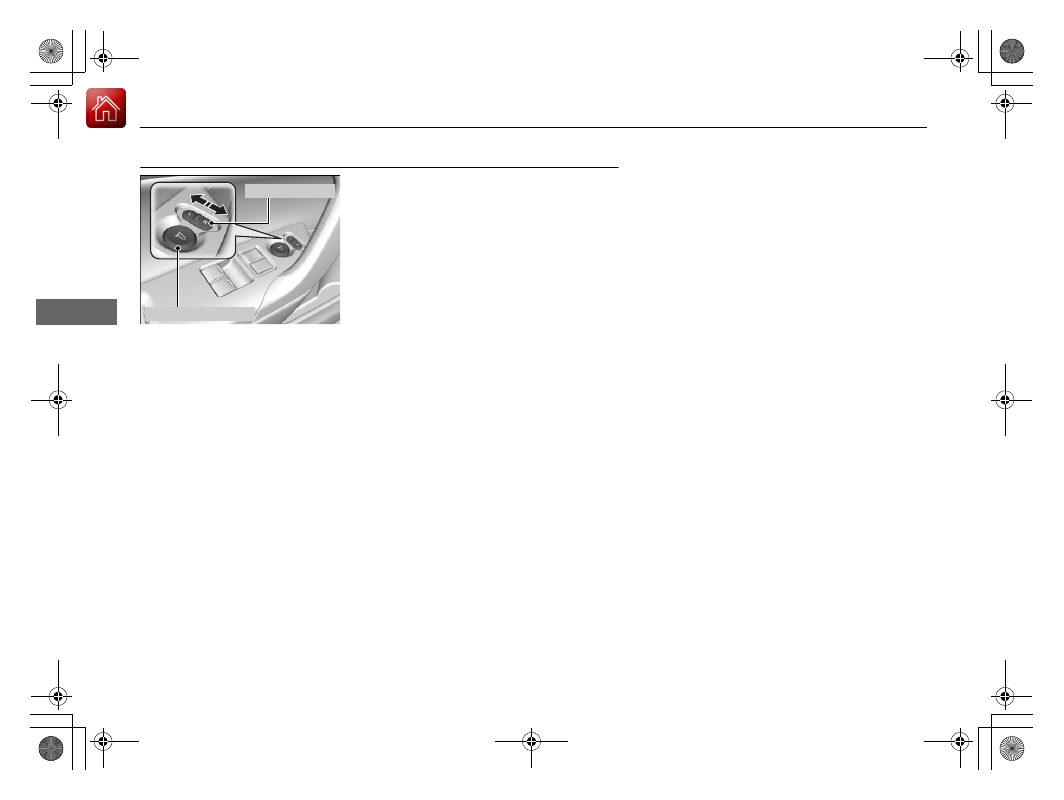Honda Accord Coupe (2017 year). Instruction - part 11

160
uu
Adjusting the Mirrors
u
Power Door Mirrors
Co
ntrols
Power Door Mirrors
You can adjust the door mirrors when the
ignition switch is in ON
(
w
*1
.
■
Mirror position adjustment
L/R selector switch: Select the left or right
mirror. After adjusting the mirror, return the
switch to the center position.
Mirror position adjustment switch: Press
the switch left, right, up, or down to move the
mirror.
*1: Models with the smart entry system have an ENGINE START/STOP button instead of an
ignition switch.
Selector Switch
Adjustment Switch